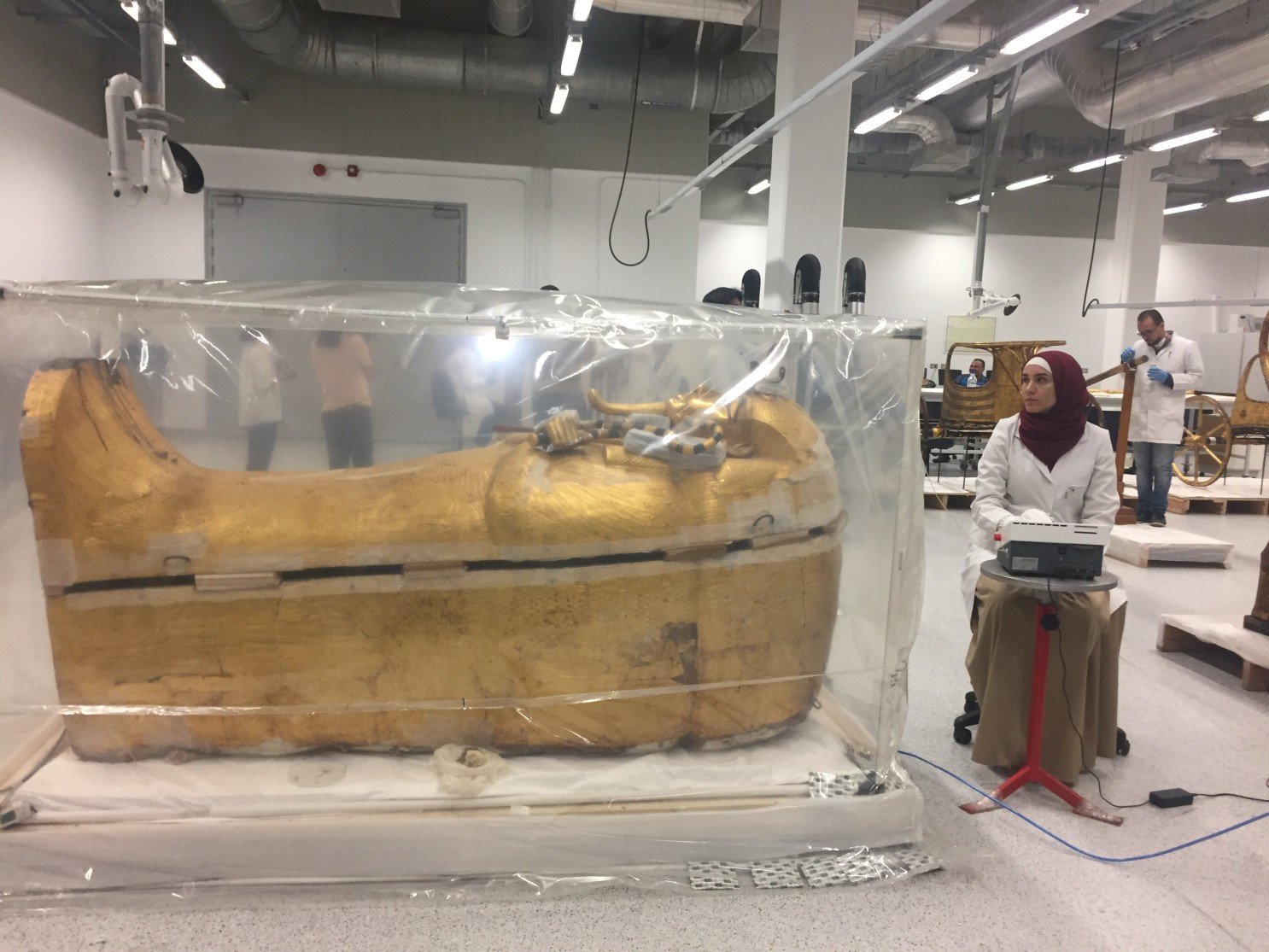According to Wikipedia, Tutankhamun, Egyptological pronunciation Tutankhamen, was an ancient Egyptian pharaoh who was the last of his royal family to rule during the end of the 18th dynasty during the New Kingdom of Egyptian history. By the era he first was put to rest, the outermost King Tut’s Coffin, which once contained King Tutankhamun ‘s remains, hadn’t ever vacated that 3,300-year ancient grave. After that archaeologist Howard Carter found the tomb during 1922, the traditional wooden coffin stayed throughout the Kings Valley — till now.
Getty Conservation Institute, as well as the Egyptian Ministry of Antiquities, completed approximately 10-year-long preservation of Tut ‘s tomb reasonably early this year. Finally, Los Angeles Times reported, they ‘re trying to rebuild his external coffin, extract from its resting place, and eventually allow specialists to look healthy.
The uppermost King Tut’s Coffin seems to be the biggest of three clustered coffins within where a mummy of King Tut was discovered. Whereas the two inner coffins were already on showcase there at Cairo’s Egyptian Museum, whenever it tries to open, the late third coffin might well finally rejoin the others after a show at the newly redesigned Egyptian Museum.
Apart from the 3 coffins which hold the remains of Tut, this show would also highlight the various artifacts found in his grave. The inner coffin is created of pretty decent gold, whereas the two outer coffins seem to be wood-built and gold-covered together with many semi-precious stone blocks.
Carter ‘s famous invention of Tut’s burial ground there in Kings Valley was the very first moment a royal tomb had already been explored so exceptionally intact from prehistoric Egypt’s day. It also held a range of spectacular royal jewels, including a meteorite knife.
Two out of three King Tut’s Coffin have been later moved to that same Egyptian museum within Cairo, whereas the king’s tomb remained left with the outer coffin. The coffin was relocated under strict protection finally in July, 97 years previously, so that it would be purified about 21 days.
However, despite the damage to the tomb now seen by experts, it will require about 8 months to repair it. Eissa Zeidan, managing director of the First Aid Restoration and Artifact Transportation, said that the coffin has been about “% impaired” because of the humidity and heat within the King Tut’s Coffin.
Egypt’s minister of antiquities, Khaled el-Anany, indicated just as often once he said that the tomb would be in a “very weak” condition, with the highest priority the repairs. The seven-foot, three-inch-long coffin has also been placed comfortably inside the new exhibit in one of Seventeen labs.
Conservators have been experimenting with different objects discovered throughout the coffin of King Tut, though there are over 5,000 — to all be displayed at the Great Egyptian Museum. With over 75,000 sq ft of property development, it will be the largest museum in Existence devoted solely to one culture.
After generations of visitors trudging via the iconic historical monument, reconstruction of King Tut ‘s grave come in that both Getty Conservation Institute and Ministry of Antiquities across Egypt agreed to the comprehensive redesign roughly a decade earlier and ended in January.
If research on the golded coffin of pharaoh finishes as well as the Great Egyptian Museum launches officially, it would be the very first time in recent history that although the 3 King Tut’s Coffin would be on exhibit together.
Articles from MyViralBox’ contributors and guest bloggers.









